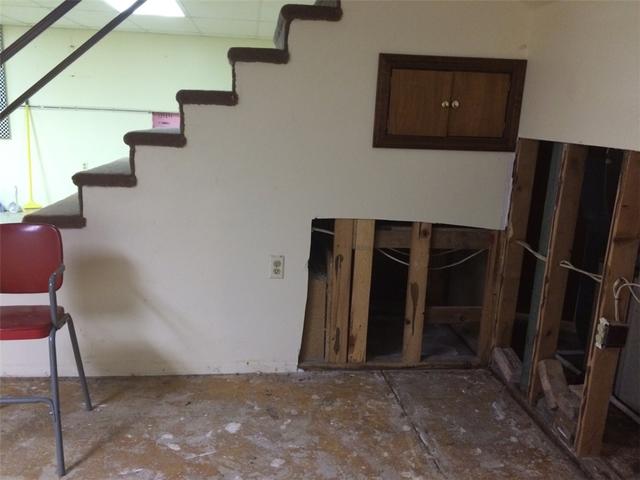
Damaged Walls and Floor from Flooding
The homeowner did everything he could to find out where the water was entering the basement - including pulling up the carpet and cutting out the walls.
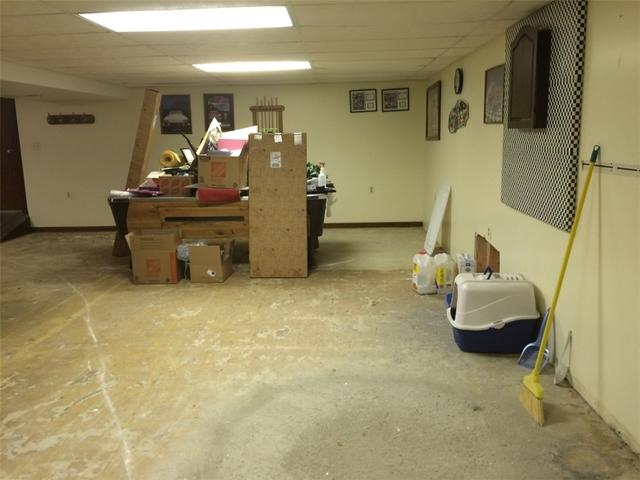
Water Damage in Flooded Finished Basement
Flooded basements are a headache in general, but it's much worse when the basement is finished. All of the soaked carpet had to be pulled up and possessions stacked in the middle of the room.
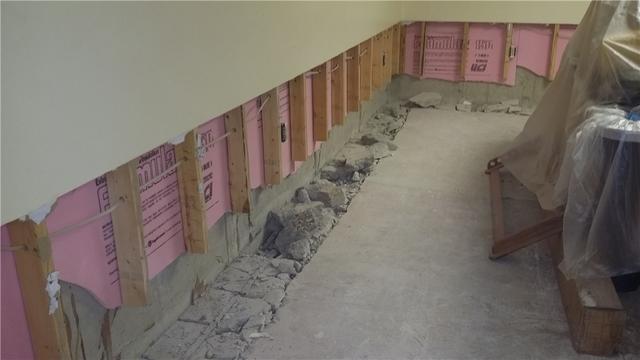
Cut Walls and Drilled Floors for WaterGuard
We have to cut away part of the wall panel in order to install the WaterGuard system. Some customers choose to replace the walls themselves, and others ask us to do it. We always replace the drilled out concrete after installing WaterGuard.
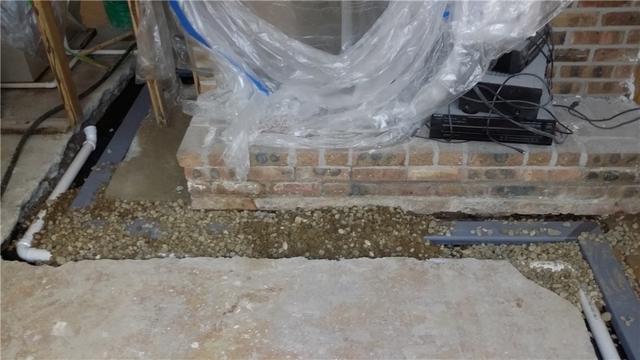
WaterGuard Installation in Progress
After removing the concrete and laying the track for the WaterGuard system, drainage stone is poured in to both keep the track steady and allow the water freedom of movement to drain into the WaterGuard.
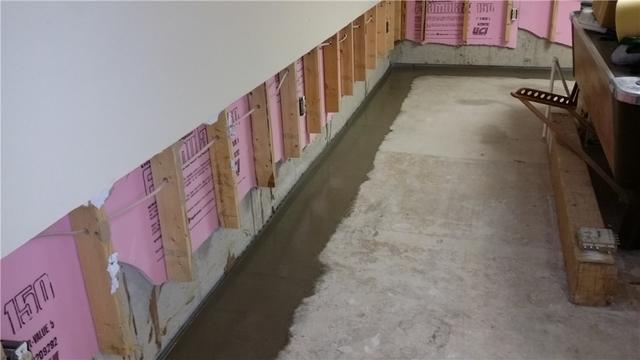
Restoring the Basement Floor After WaterGuard Installation
New concrete is poured over the WaterGuard track to restore the floor. Don't worry about how dark it looks - it'll lighten as it dries.
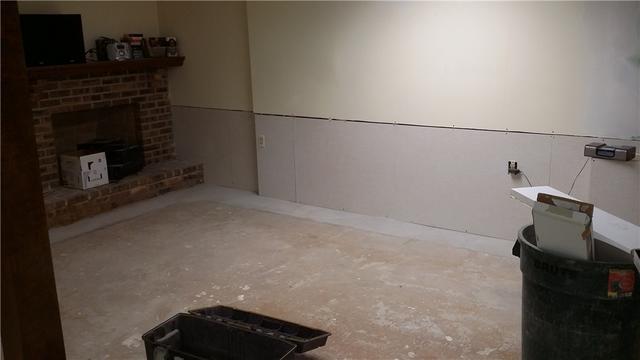
Replacing Wall Panels After WaterGuard Installation
Some customers prefer to handle restoring the walls themselves, but this one asked us to replace the wall panels. They're now ready to be painted to match the upper portion of the wall.
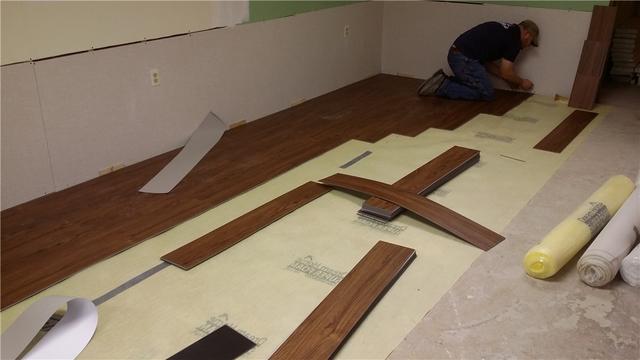
New Waterproof Flooring for Flooded Basement
With the new waterproofing system installed, there won't be any more flooding issues. But it's understandable that, after pulling up an entire room of soaked carpet, our customer was a little reticent to go that route again. We offer many flooring options, and he chose our MillCreek flooring, which gives the look of hardwood but is 100% waterproof.
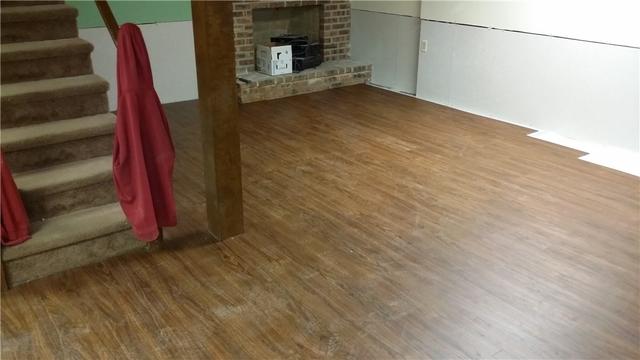
Restored Marne, MI Basement
The finished product - clean, dry, and staying that way.









